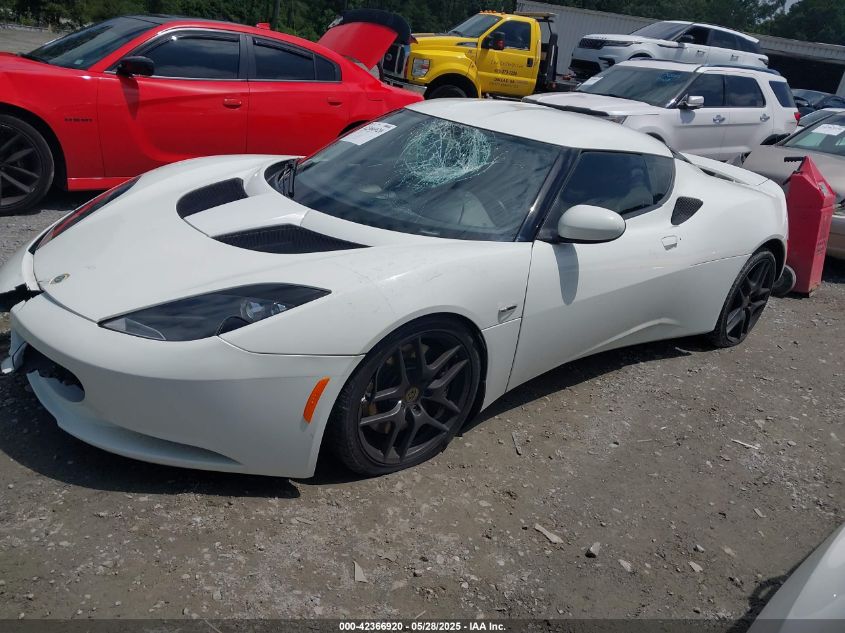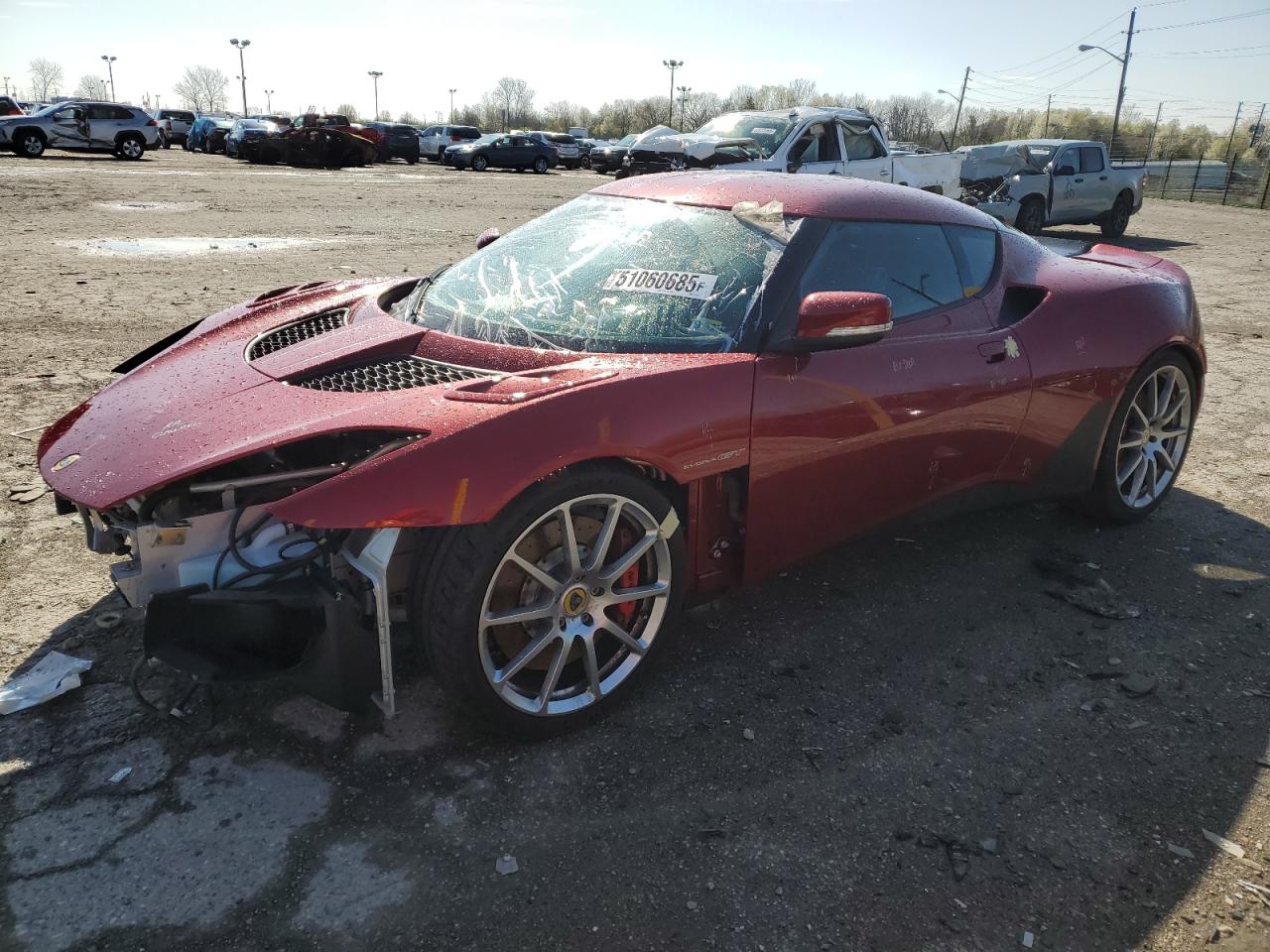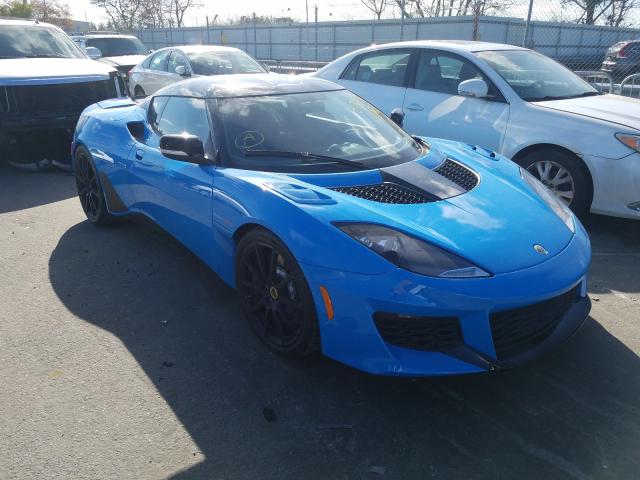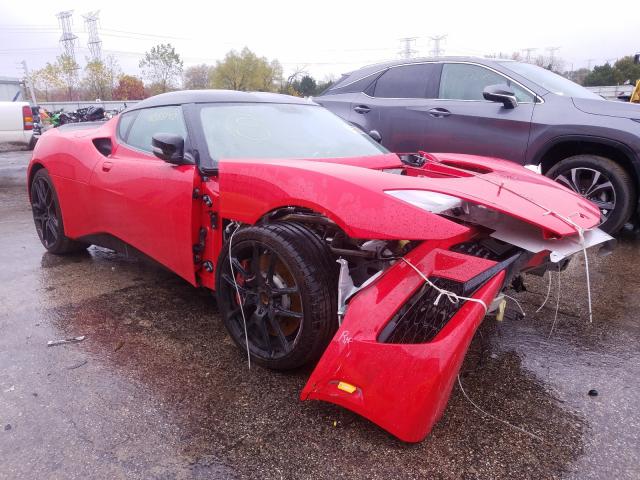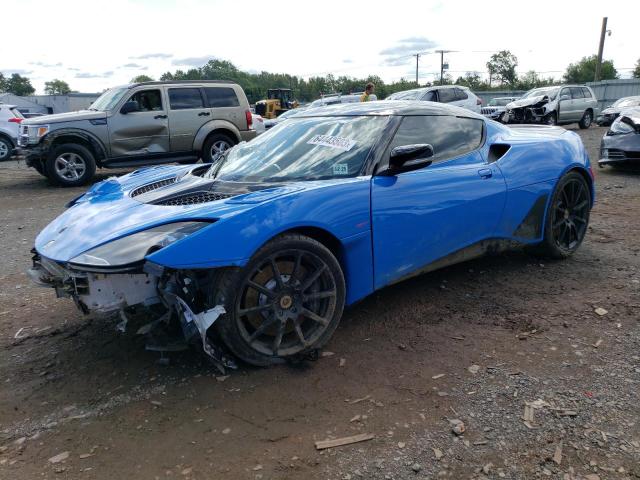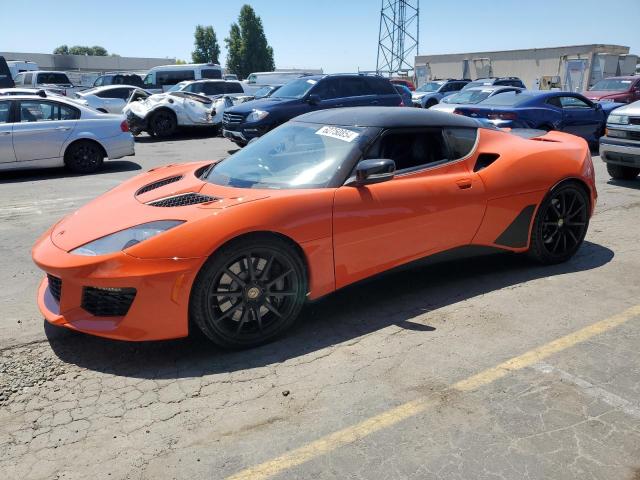2013 LOTUS EVORA | SCCLMDSU0DHA10111
Lot details
- Sale Date2021-07-26
- Lot Number48226001
- ACV51248.5 $
- Sale documentWA - undefined
- LocationWA - NORTH SEATTLE
- Odometer49,518 miles (79,691 km)
- Primary DamageMECHANICAL
Vehicle specifications
4
~€130,000
Engine: 3.5L supercharged V6
Torque: 440 Nm
0–100 km/h: ~3.8 s
The Lotus Evora GT430 was the ultimate expression of Lotus’ philosophy filtered through a more mature, road-usable platform. With 430 hp, a curb weight under 1,300 kg, and over 250 kg of downforce, it was a true track weapon with license plates. Acceleration to 100 km/h in 3.8 seconds and a top speed of 305 km/h placed it in 911 GT3 territory.
Every component of the GT430 was focused: carbon fiber front and rear bumpers, roof, tailgate, and aero kit, Öhlins TTX adjustable dampers, AP Racing brakes, and ultra-sticky Michelin Pilot Sport Cup 2 tires. The chassis featured Eibach springs, Torsen limited-slip differential, and aggressive suspension geometry – yet it remained usable on public roads.
The cabin, while minimalist, featured Alcantara, carbon seats, and an exposed gearbox linkage in manual form. It offered just enough comfort (A/C, touchscreen nav) to not be punishing — a balance few track-focused cars achieve.
If the GT430 was the ultimate, the Evora GT (400 hp) for the US market struck the best balance between livability and raw engagement. Still rear-wheel drive, still light and agile, but with better sound insulation, infotainment, and availability.
The Lotus Evora GT430 earns its place in the performance registry as the most complete and capable combustion-powered Lotus GT ever built — combining exotic looks, motorsport aero, Toyota reliability, and a true analog driving soul in one carbon-laced package.
Final Bid Lotus Evora (2013)
$29,750
$29,750
$29,750
Body Styles
The Lotus Evora was produced solely as a 2-door mid-engine fastback coupe, with an optional 2+2 seating configuration – unique among Lotus cars. Its proportions were defined by a long wheelbase, low roofline, and curvaceous rear haunches. From 2010 to 2014, the styling remained relatively clean and understated. The 2015 update introduced the Evora 400 with revised aerodynamics, larger rear wing, integrated diffuser, and more aggressive cooling ducts. The final iterations like the GT and GT410 featured carbon fiber splitters, exposed engine covers, and lightweight glass or polycarbonate rear windows.
Model Name Meaning (Manufacturer)
The name "Evora" follows Lotus’s long-standing tradition of naming cars with words starting with “E” – including Elise, Exige, and Esprit. Though officially never defined, the name is believed to draw from Évora, a historic city in Portugal, aligning with the model’s more refined and GT-oriented character compared to its track-focused siblings. Internally, the Evora was seen as a spiritual successor to the Esprit and a bridge between pure driver’s cars and daily usability.
Model Name Meaning (Languages)
“Evora” carries an elegant, almost Latin tonality, resonating across European and international markets as a premium, evocative name without translation. It subtly distances itself from more hardcore names like “Exige,” while still preserving Lotus’ brand character. Its smooth phonetics and geographic connotation lend it a sophisticated, almost exotic identity in English, French, Spanish, and Italian markets alike.
Body & Interior Colors and Rims
Throughout its lifecycle, the Evora was offered in a wide spectrum of vibrant colors, reflecting Lotus’ boutique and motorsport roots. Early models came in shades like Solar Yellow, Aspen White, Storm Titanium, and Ardent Red. The Evora S introduced more dynamic options like Motorsport Green, Nightfall Blue, and Carbon Grey. With the launch of the 400 and GT models, Lotus expanded the palette to include Military Grey, Essex Blue, Burnt Orange, and Metallic Orange, along with several matte-finish colors and bespoke options under Lotus Exclusive.
Interior trims were functional but increasingly luxurious with each revision. Base models featured lightweight cloth and Alcantara interiors with exposed aluminum, while Evora S and 400 added full leather options in Tan, Red, and Charcoal with contrast stitching. GT and GT410 variants offered carbon fiber bucket seats, Alcantara headliners, yellow or red seatbelts, and optional Titanium gear knobs. Dashboard and center tunnel were kept minimal but driver-focused, with analog gauges and toggle switches retained even in later models.
Wheels ranged from 18-inch fronts and 19-inch rears in early Evoras to staggered 19/20-inch forged aluminum wheels in the Evora 400 and GT models. Lightweight 10-spoke or Y-spoke designs were finished in silver, gloss black, or anthracite grey. Optional race-derived forged wheels and ultra-light Michelin Pilot Sport Cup 2 tires came standard on track-oriented GT variants, and carbon ceramic brakes were available through the Lotus Motorsport program, though rarely specified due to cost.
Top Expensive Options
- Carbon Fiber Roof Panel with Lightweight Poly Rear Glass: $4,000
- Titanium Akrapovič Exhaust System: $3,800
- Track Pack with Oil Coolers and Ohlins Dampers: $5,500
- Alcantara Race Interior Package: $2,200
- Lotus Exclusive Custom Paint (Matte or Pearl): $3,000
- Carbon Bucket Seats with Yellow Piping: $3,500
- Forged Ultra-Light Wheels in Satin Black: $2,000
- Upgraded Navigation with Reversing Camera: $1,400
- Cruise Control + Heated Seats Package: $1,000
- Black Pack with Carbon Wing and Mirrors: $1,800
vs Competitors
The Evora competed in a unique niche between Porsche 911 Carrera, Jaguar F-Type, and Chevrolet Corvette C7, while offering a more analog and tactile driving experience. Compared to the 911, the Evora was lighter, more direct, and less insulated – rewarding skilled drivers over long-distance cruisers. Against the Corvette, it had superior mid-engine balance but lacked raw V8 power. Versus the F-Type, the Evora was more focused and less luxurious, but unmatched in feedback and agility. For enthusiasts craving a daily-drivable Lotus with real chassis feel, the Evora was often the ideal compromise between the spartan Elise and a GT3-level 911.
Fun Fact
The Evora was the first Lotus sold in the U.S. with stability control, airbags, and full federal compliance – effectively reviving the brand for North American enthusiasts. It also holds the title of last Lotus with a manual transmission and 2+2 seating, making the final Evora GT (2021) a future collectible among analog performance purists.




